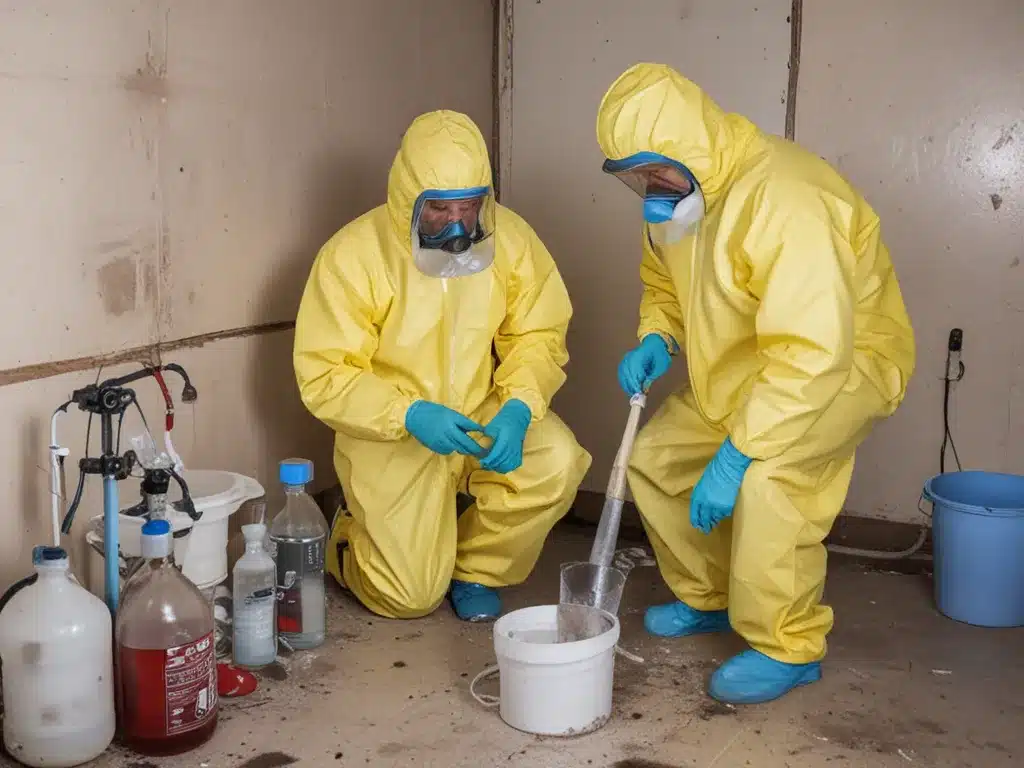Introduction
As a professional involved in meth lab cleanup, I know that dealing with the hazardous chemicals left behind in a former meth lab requires great care and specialized knowledge. In this article, I will provide an in-depth look at the entire process of meth lab chemical removal, from initial assessment to final clearance testing.
Initial Assessment and Planning
When taking on a new meth lab remediation job, the first step is conducting a thorough initial assessment. This involves surveying the property to identify all contaminated areas and inventorying the types of chemicals found. Common hazardous substances in former meth labs include:
- Solvents like acetone, methanol, and toluene
- Acids like muriatic acid, sulfuric acid, and red phosphorus
- Bases like sodium hydroxide (lye) and ammonia
- Gases like anhydrous ammonia and hydrogen chloride
I’ll also look for evidence of spills, leaks, or fires, as these can spread contamination.
After the initial assessment, I develop a chemical removal plan that identifies:
- Which areas need remediation
- What personal protective equipment (PPE) is required
- How chemicals will be inventoried, containerized, and disposed of
- What final clearance testing is needed
Proper planning is crucial for staying safe and achieving full decontamination.
Packaging and Removal of Chemicals
The bulk of the meth lab cleanup process involves systematically identifying, categorizing, packaging up, and removing the chemicals.
I begin by having a qualified HazMat specialist assess all unknown substances. Any highly toxic or unstable chemicals need to be handled extremely carefully by chemical disposal experts.
For the remaining substances, I group them into solvents, acids, bases, gases, and solids and place them into appropriate containers. For example:
- Solvents go into one-gallon steel containers
- Acids go into five-gallon plastic containers
- Bases go into five-gallon polyethylene drums
Proper labeling and segregation of chemicals is vital for safe storage and transfer. All containers must be DOT approved for hazardous materials transport.
Cleaning Contaminated Areas
After chemicals have been removed, the next step is washing down all contaminated surfaces to remove toxic residues. Different cleaning solutions are required depending on the substance.
- Solvent residues are cleaned with hot soapy water or isopropyl alcohol.
- Acidic residues require a baking soda and water solution to neutralize.
- Caustic bases call for vinegar and water to neutralize.
Thorough scrubbing and rinsing is necessary to lift all lingering contamination out of porous surfaces. Multiple cleanings are typically needed to pass final clearance testing.
Clearance Testing and Finalization
The last phase of remediation is clearance testing to verify the property has been fully decontaminated. Samples are taken from former cook areas, chemical storage spots, and plumbing systems.
Specialized meth-lab testing labs analyze the samples for illegal drug and chemical residues down to very low concentration levels. If any sample fails, I have them re-cleaned and retested until they pass.
Once all samples pass clearance tests, the property can be considered safe for re-occupancy and the meth lab chemical removal process is complete. Proper documentation of all procedures is compiled for liability protection.
Conclusion
As shown throughout this article, safely removing hazardous meth lab chemicals and residues requires strategic planning, extreme care, and rigorous contamination testing. My extensive training and meth lab remediation experience allows me to take on these challenging projects with confidence. While costly, a full chemical decontamination is essential for protecting human health and returning properties to legal use.







